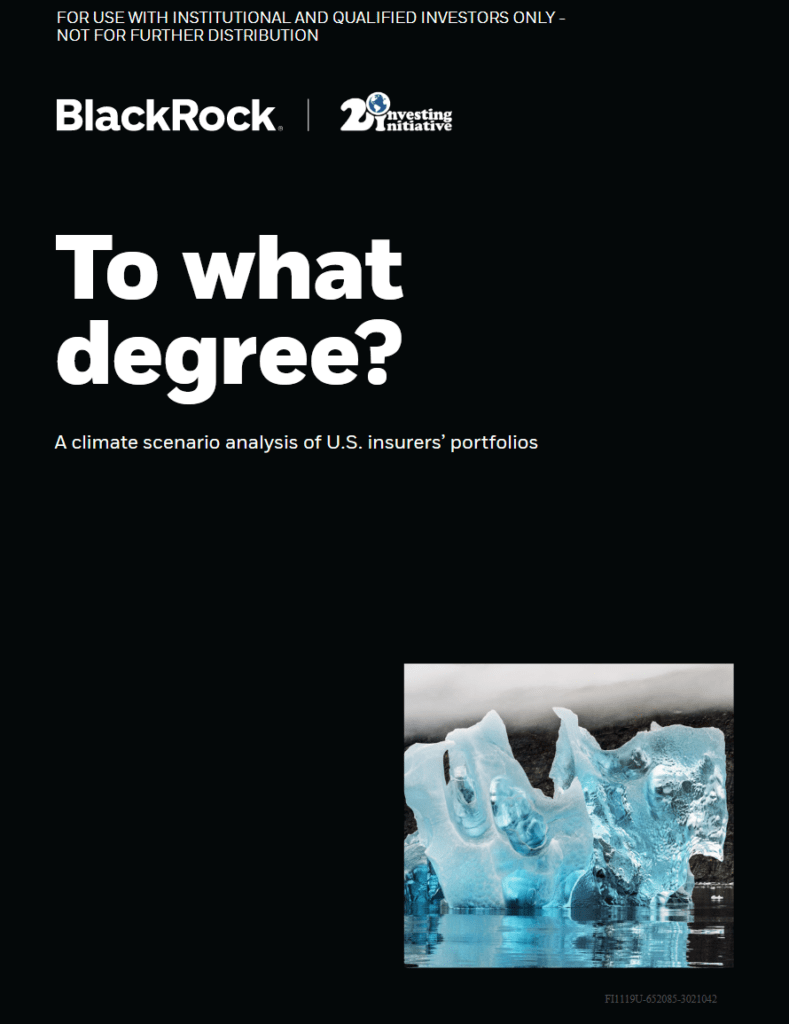With input from 2° Investing Initiative, BlackRock has performed a climate scenario analysis on US insurers’ portfolios in order to help investors understand climate risks and adapt investment strategies to manage them.
To what degree?
The implications of climate change are playing out across two broad channels: physical and transition related. Physical risks of climate change manifest in the form of rising sea levels, droughts, wildfires and storms, as discussed in BlackRock’s Getting Physical. Transition risks (and opportunities) play out along technological, regulatory and social channels. Insurance companies are exposed to both these types of climate risks.
In this piece, BlackRock aims to focus specifically on these transition risks on investment portfolios for insurers by performing scenario analysis on investment portfolios. BlackRock combined 2° Investing Initiative’s data on climate and long-term metrics on a global scale, together with their asset-level expertise and climate modeling capabilities, in order to examine the transition risks faced by investment portfolios.
Key takeaways from BlackRock’s analysis
- The first step in understanding climate risks in portfolios is to gain an understanding of what the portfolio owns.
- While climate scenarios are not predictions, the analysis of how a portfolio is aligned with forward versions of economies under a 2-degree transition can help investors contextualize this risk.
- While insurers have a multitude of factors to consider, climate risks have evolved from long-term to medium-term issues. Analysis such as this, which demonstrates a five-year outlook, should lead investors to re-examine holdings as they determine how likely we are to achieve the goals set by the Paris Climate Agreement, or how likely technology or consumer preferences will affect certain sectors.
- Once an assessment has been made on material climate risks in the portfolio, insurers can start to craft company ESG policies, or at minimum create a timeline of milestones needed.
- Through analysis such as this our goal is to educate clients to make deliberate choices, rather than be victim to unintended consequences.
Find the full report here.


